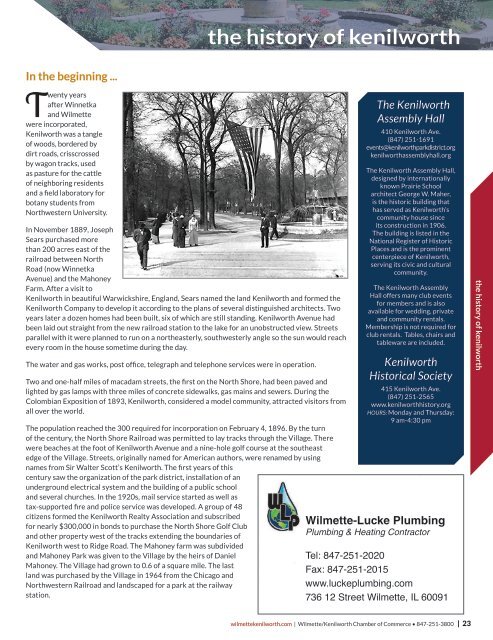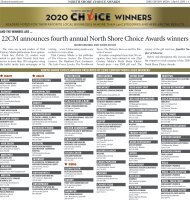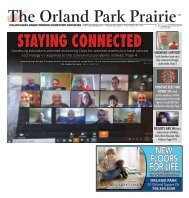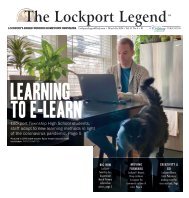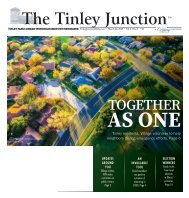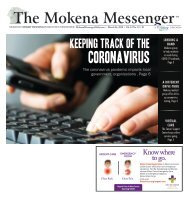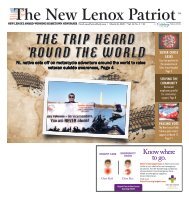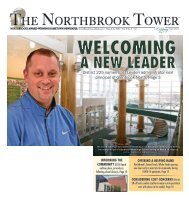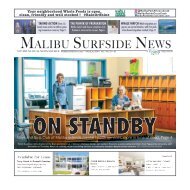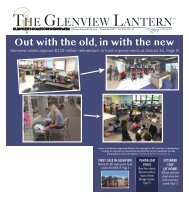WCG-052418
You also want an ePaper? Increase the reach of your titles
YUMPU automatically turns print PDFs into web optimized ePapers that Google loves.
the history of kenilworth<br />
In the beginning ...<br />
Twenty years<br />
after Winnetka<br />
and Wilmette<br />
were incorporated,<br />
Kenilworth was a tangle<br />
of woods, bordered by<br />
dirt roads, crisscrossed<br />
by wagon tracks, used<br />
as pasture for the cattle<br />
of neighboring residents<br />
and a field laboratory for<br />
botany students from<br />
Northwestern University.<br />
In November 1889, Joseph<br />
Sears purchased more<br />
than 200 acres east of the<br />
railroad between North<br />
Road (now Winnetka<br />
Avenue) and the Mahoney<br />
Farm. After a visit to<br />
Kenilworth in beautiful Warwickshire, England, Sears named the land Kenilworth and formed the<br />
Kenilworth Company to develop it according to the plans of several distinguished architects. Two<br />
years later a dozen homes had been built, six of which are still standing. Kenilworth Avenue had<br />
been laid out straight from the new railroad station to the lake for an unobstructed view. Streets<br />
parallel with it were planned to run on a northeasterly, southwesterly angle so the sun would reach<br />
every room in the house sometime during the day.<br />
The water and gas works, post office, telegraph and telephone services were in operation.<br />
Two and one-half miles of macadam streets, the first on the North Shore, had been paved and<br />
lighted by gas lamps with three miles of concrete sidewalks, gas mains and sewers. During the<br />
Colombian Exposition of 1893, Kenilworth, considered a model community, attracted visitors from<br />
all over the world.<br />
The population reached the 300 required for incorporation on February 4, 1896. By the turn<br />
of the century, the North Shore Railroad was permitted to lay tracks through the Village. There<br />
were beaches at the foot of Kenilworth Avenue and a nine-hole golf course at the southeast<br />
edge of the Village. Streets, originally named for American authors, were renamed by using<br />
names from Sir Walter Scott’s Kenilworth. The first years of this<br />
century saw the organization of the park district, installation of an<br />
underground electrical system and the building of a public school<br />
and several churches. In the 1920s, mail service started as well as<br />
tax-supported fire and police service was developed. A group of 48<br />
citizens formed the Kenilworth Realty Association and subscribed<br />
for nearly $300,000 in bonds to purchase the North Shore Golf Club<br />
and other property west of the tracks extending the boundaries of<br />
Kenilworth west to Ridge Road. The Mahoney farm was subdivided<br />
and Mahoney Park was given to the Village by the heirs of Daniel<br />
Mahoney. The Village had grown to 0.6 of a square mile. The last<br />
land was purchased by the Village in 1964 from the Chicago and<br />
Northwestern Railroad and landscaped for a park at the railway<br />
station.<br />
The Kenilworth<br />
Assembly Hall<br />
410 Kenilworth Ave.<br />
(847) 251-1691<br />
events@kenilworthparkdistrict.org<br />
kenilworthassemblyhall.org<br />
The Kenilworth Assembly Hall,<br />
designed by internationally<br />
known Prairie School<br />
architect George W. Maher,<br />
is the historic building that<br />
has served as Kenilworth’s<br />
community house since<br />
its construction in 1906.<br />
The building is listed in the<br />
National Register of Historic<br />
Places and is the prominent<br />
centerpiece of Kenilworth,<br />
serving its civic and cultural<br />
community.<br />
The Kenilworth Assembly<br />
Hall offers many club events<br />
for members and is also<br />
available for wedding, private<br />
and community rentals.<br />
Membership is not required for<br />
club rentals. Tables, chairs and<br />
tableware are included.<br />
Kenilworth<br />
Historical Society<br />
415 Kenilworth Ave.<br />
(847) 251-2565<br />
www.kenilworthhistory.org<br />
HOURS: Monday and Thursday:<br />
9 am-4:30 pm<br />
Wilmette-Lucke Plumbing<br />
Plumbing & Heating Contractor<br />
Tel: 847-251-2020<br />
Fax: 847-251-2015<br />
www.luckeplumbing.com<br />
736 12 Street Wilmette, IL 60091<br />
the history of kenilworth<br />
wilmettekenilworth.com | Wilmette/Kenilworth Chamber of Commerce • 847-251-3800 | 23


